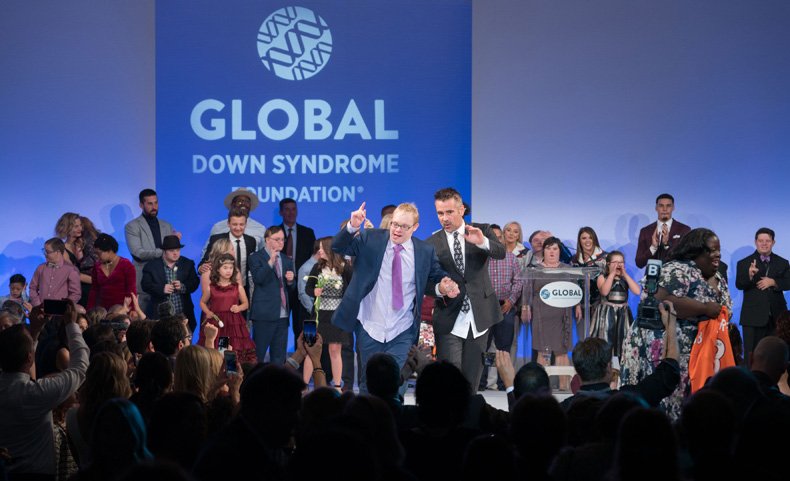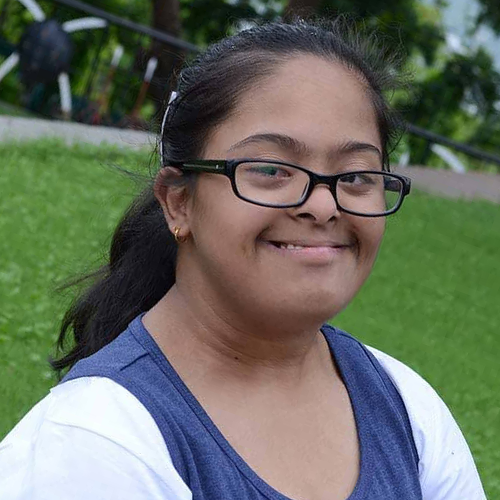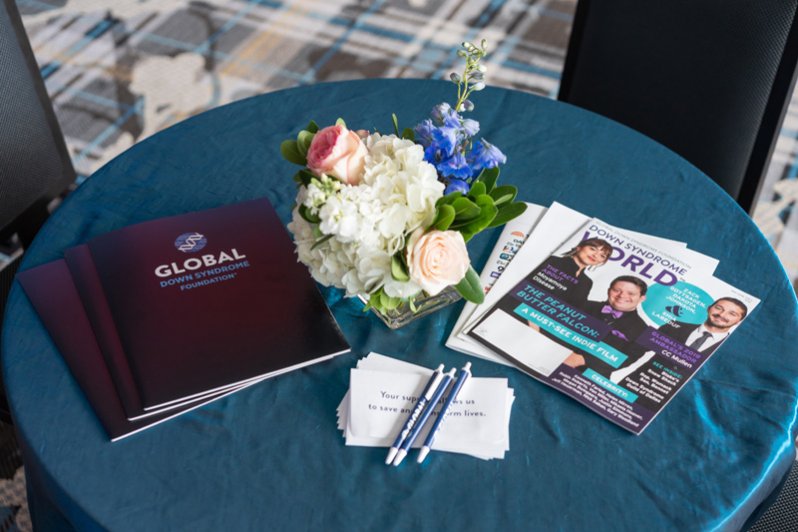Breaking a wall for the sake of simple destruction is only classifiable as art under specific punk rock circumstances that lead to positive political purifications. Such demolition might be innately beautiful in its raw, explosive moment, but is not likely to mean much symbolically if the barrier in question was never really holding anything back or apart. By contrast, when walls tumble down that were once utilized not just to separate but to psychologically segregate, and thus marginalize in multiple ways on both sides of the divide, this is another form of high art entirely, one that tends to go by the stage name of revolution.
As a concept itself, the Global Down Syndrome Foundation’s annual fashion show entitled “Be Beautiful, Be Yourself” benefitting the Linda Crnic Institute for Down Syndrome was a radical one when it began. Promoting models with Down Syndrome, quietly upending ill-mannered and calcified ideas about what that distinction connotes, and offering the fashion world a chance to view the unique contributions and potential of this demographic in a setting that is mutually supportive was, at one time, fairly unimaginable. That the “Be Beautiful, Be Yourself” event, hosted at the Sheraton Denver Downtown Hotel, also has the distinction of being the largest single fundraiser aimed at supporting the Down Syndrome community in the world, as well as being truly pioneering in its approach to featuring the beauty and brilliance of models with Down Syndrome at all lends additional merit to its calling.
Nothing short of a full-blown regime change has been desperately required with regard to models of any color at all being represented in any formidable way within fashion for centuries, but this ongoing critical need ramps up considerably when you add in further-sundering signifiers beyond race, such as neurodiversity or special needs. The high walls of haute couture have been notoriously haughty in the not-so-distant past when it came to even acknowledging, much less including, members of the special needs community up until Carrie Hammer asked Dr. Danielle Sheypuk to become the first wheelchair-mobile model to ever participate in a New York Fashion Week runway show in 2014.

Designed to foster a deeper understanding of and facilitate useful communication around all topics concerning individuals with special needs, the “Be Beautiful, Be Yourself advocacy affair boasts none other than musical mega-monarch Quincy Jones himself as its mission’s International Spokesperson–boundary-busters every which way one looks in this enterprise! Fracturing unfriendly fences six ways to Sunday, Bengaluru’s own Riza Reji will appear on November 12, 2022 as the first and only Indian model to grace the catwalk of “Be Beautiful, Be Yourself” in the pageant’s history.
At 23 years of age, Reji has been inclined toward artistic pursuits since her earliest childhood and was raised in a household where both parents work in creative fields. Riza’s mother likewise runs an NGO dedicated to the economic empowerment of individuals with special needs. It is no great leap to envision the myriad ways in which Riza’s theatre and movement training under the esteemed Diana Tholoor at The Chrysallis Performance Arts Centre for the Challenged in Bengaluru, Karnataka, India will serve her on the runway and all other formerly partitioned parapets, Tholoor’s own groundbreaking work in shattering stereotypes around special needs being the stuff of inspired legend.

Though originally from Kerala, Reji established herself as a world traveler alongside her supportive family years ago, making her divide-disrupting journey to the United States to participate in “Be Beautiful, Be Yourself” another exhilarating notch on an increasingly decorated cultural passport. The audition that landed her this role was judged on a triplicate rubric that evaluated walking style, costume, and interpersonal skills, all aspects of physicality that Reji’s daily engagement with muscle strengthening, emotional expression exercises through art, and physiotherapy as a way of life would inform.
Familiarity does not breed contempt when it comes to social betterment. The significance of Reji’s inclusion in “Be Beautiful, Be Yourself” represents the kind of reset and recalibration that is beginning to take place across the board in global fashion, but many do not yet realize how two-way the flow of reward in this change truly is. Close to 28 million adults in the United States alone face challenges in cognition, walking, hearing, sight or other areas. This is not a niche group. Participation in the arts plays a role in the development and achievement trajectories of neurodiverse individuals, doing more than enhancing their abilities to purposefully interact with the world at large but to simultaneously and stratospherically increase that world’s facility for welcoming them. Whether a fashion gatekeeper or gatecrasher, the innovation revenue charted by those companies and collectives that include the most diversity within their creative makeup is mathematically undeniable.
Where runway models become role models, rejection of every kind is reduced. This is fantastic for fashion but transformative for people, without a wide array of which fashion ceases to live up to the fullest potential of its name. Just as any great clotheshorse from Sarah Jessica Parker to Lady Gaga would immediately attempt to communicate, the clothes are never just clothes–they are portals of being and prisms through which whole new selves may emerge in colors unnameable. This makes the impact of having the egalitarian chance to explore those renditions of self that much more indefinably important. As garments have stood in for rank since the Romans and even before, there is a striking symmetry to be noted here about how Reji’s visage and thread-verve are restitching restrictions once cruelly imposed through a format likewise once reserved for neurotypical and physio normative people.

In even a cursory glance at the incorporation of Asian women of any stripe into mainstream Western modeling, a glaring omission peers back. This exclusion has enculturated nuances of race preference as well, exposing a more blanket acceptance of Japanese, Chinese and Korean models, exemplified in the popularity of Kimora Lee Simmons and Jenny Shimizu in the 1990s, but not nearly the same recognition for Indian and Filipino archetypes. Yasmeen Ghauri, for all her global stature, stood nearly alone for high-profile supermodels of subcontinental origin within the same era. Reji’s rise serves as the current inspirational train stop on a straight line that runs through the careers of women like Padma Lakshi all the way through to Quannah Chasinghorse. Acceptance and tolerance are respectable starting points for conversations about Asian involvement in fashion, but the ultimate depot of this historically fringe force should ultimately be a gleeful exhibition. Something about Riza Reji’s mischievous and undaunted smile suggests that the glee is already well in play, and we will all gain from the glamorous exposition of it.





